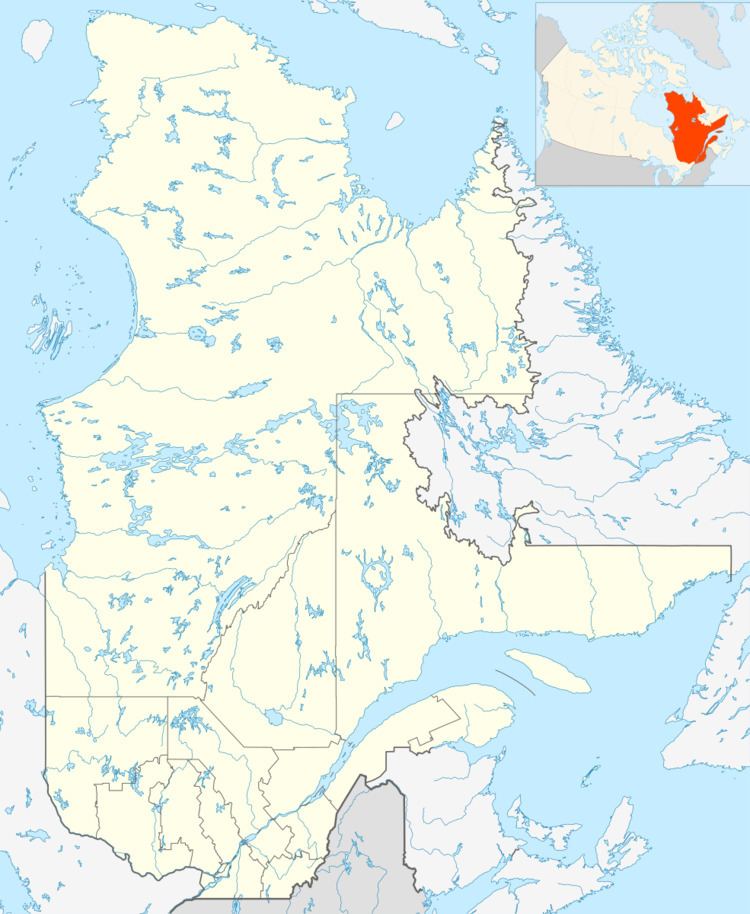Basin size 25.86 km (9.98 sq mi) Length 12 km | Tributaries Right:Bradley brook | |
 | ||
Main source Saint-Narcisse, Quebec109 m (358 ft) River mouth Batiscan River, at Sainte-Geneviève-de-Batiscan10 m (33 ft) | ||
The Rivière à la lime flows in the municipality of Sainte-Geneviève-de-Batiscan, in the Les Chenaux Regional County Municipality, in the administrative region of Mauricie, in the province of Quebec, Canada. The “rivière à la lime” drains a watershed of 25.86 km2. This river has a length of 12.14 km and empties into the Batiscan River.
Contents
Geography
Taking it source in the Saint-Narcisse’s moraine, this river of the Batiscanie flows eastward in agricultural areas (sometimes through small forest areas) in the plain at the foot of the large moraine (mountainous online extending parallel to St. Lawrence river in the east-west direction).
This river receives waters from Bradley Creek (at 3.6 km from its mouth) which comes from Saint-Luc-de-Vincennes. In its course, the river flows through the Route 361 of the “rang Rivière à la lime" (row). The “rivière à la lime” empties into the Batiscan River, towards la “Grande pointe” (great point of land), above the village of Sainte-Geneviève-de-Batiscan. The mouth of the “rivière à la lime” is located at 6.2 km downstream from the mouth of the River des Chutes (rivière des chutes) and 9.2 km lower of the mouth of the Rivière des Envies. The newspaper of Trois-Rivières says on March 15, 1875, that near the “rivière à la lime”, we find significant deposits of bog iron ore.
The drained basin of the “rivière à la lime” was the third area of colonization in the Lordship of Batiscan up to the 18th Century, after the colonization of the surroundings of St. Lawrence River and Batiscan river. Agriculture is the main activity in the watershed. The residences of the basin are primarily located in the Third row (3e rang), Great Line (Grande Ligne) and the row of the “Rivière-à-la-Lime”.
Toponymy
Three theories explain the origin of the name "Rivière à la lime":
The French name "Rivière à la lime" was formalized as of December 5, 1968 in the register of place names of the Commission de toponymie du Québec (Geographical Board of names places of Québec). While the “rang Rivière-à-la-Lime" (row) was formalized as of April 9, 1979 with the Commission. The name of the place derives from the river of the same name.
